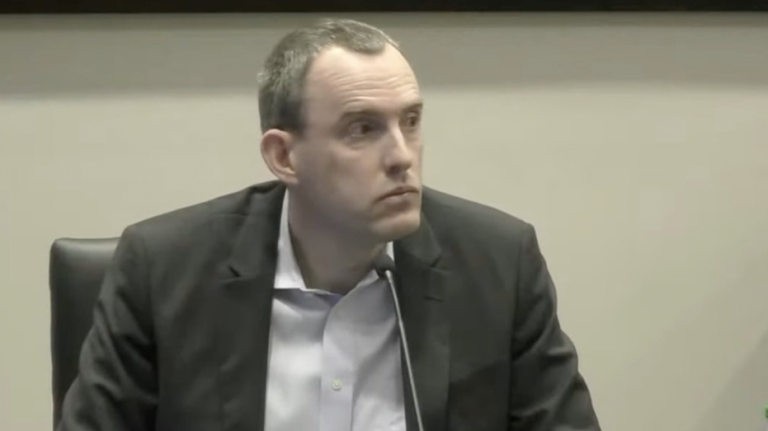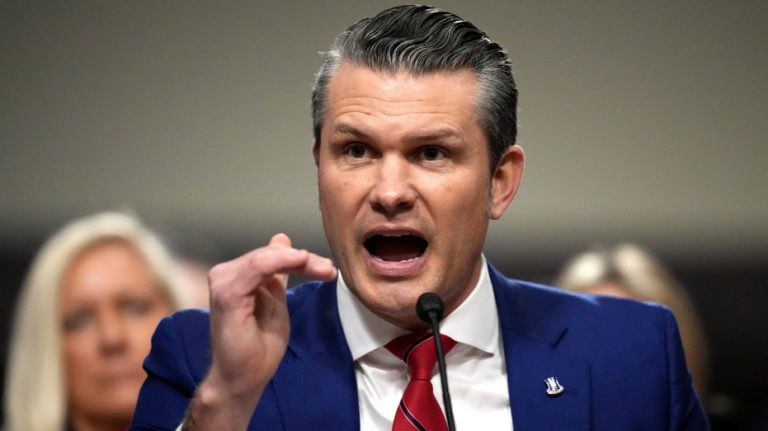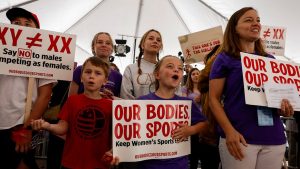“President Trump is the right person at the right time to tackle this problem. He is a developer, thinks big, and understands the public/private tensions,” my old boss in the Reagan White House Counsel’s Office, Richard Hauser, suggested when I began to grapple with the enormity of the challenge facing Los Angeles.
I practiced land use law in California for almost 30 years on behalf of landowners large and small, public and private. California land use law is a tumbleweed of regulations and authorities. The worst is the California Coastal Commission (which will almost certainly play a villain’s role in rebuilding Pacific Palisades and Malibu) but which lacks jurisdiction over the land of the victims in Altadena, Sylmar, Pasadena and other areas at least a few miles from the coast. But there are more than a dozen federal, state and local agencies ordinarily involved in any large land development and a massive rebuild of this sort could quickly descend into an endless welter of initiatives.
“Rebuild LA” followed the riots of 1992. It was stood up in great hope of a renaissance in the areas destroyed in the paroxysm of violence that followed the first not guilty verdict in the trial of officers charged with the 1991 beating of Rodney King. More than 50 people died in the violence, thousands were injured, fires and looting ravaged the City of Angels. Rebuild LA was helmed by Peter Ueberroth and even that titan of California, revered because of his management of LA’s 1984 Olympics, could not bring order out of the chaos. The effort faded and failed. LA then as now is not easily governed. Or rebuilt. On Sunday’s Meet the Press, California Governor Gavin Newsom was using the language of Rebuild LA from 30 years ago: bringing everyone together to reimagine an LA 2.0 etc.
Last week’s catastrophe (which is ongoing and indeed may have returned before this posts) left devastation far, far worse than those 1992 riots. Most of the attention has focused on the extraordinary destruction of much of Malibu colony and the Pacific Palisades neighborhood of LA, but communities of all sorts have been devastated by the fires and the failures of government at every level to prevent and contain the blazes. At least dozens of lives have been lost and thousands and thousands of homes and businesses have been destroyed.
CLICK HERE FOR MORE FOX NEWS OPINION
I turned to Hauser for some thoughts because he helmed for many years the Pennsylvania Avenue Development Corporation, and kept it from becoming mired in the typical bureaucratic malaise of the progressive era. The Corporation was established as a wholly owned Federal corporation by the Pennsylvania Avenue Development Corporation Act of 1972, as amended (40 U.S.C. 871). The Corporation was governed by a 15-member Board of Directors. When Hauser and his colleagues took control, the plans became reality and the Corporation oversaw an extraordinary rebirth of the nation’s most celebrated avenue. It’s work done, it was dissolved in 1996. Rare that. (Hauser was quick to credit many people for the success of the corporation, including Skidmore Owings Merrill, its first Chairman, Arthur White, then Architect of the Capitol, and J. Carter Brown, then Director, National Gallery of Art. One organization does not mean one individual, just one authority.)
I asked Hauser to look up from the tee box and think on what could be done for LA using that model.
NEWSOM SUSPENDS CA ENVIRONMENTAL LAW TO ELIMINATE ‘ROADBLOCKS’ FOR WILDFIRE VICTIMS
“President Trump should immediately task every agency of the federal government to come up with their best ideas for addressing the situation and, perhaps more importantly, convene the best and brightest from the private sector, domestically and internationally, to brainstorm and identify steps forward,” Hauser emailed in reply.
“One of the first questions is whether the area should simply be rebuilt as it was or is there an opportunity to build smarter and more imaginatively knowing what we now know about the infrastructure, elevations, soil, hazards, and so on. Perhaps a combination of single, multi-family, and mixed use, parks, etc. A charrette convened for this purpose could be enlightening,” he continued.
“One thing seems clear to me,” Hauser emailed. “A new governance structure is needed with the singular focus of reclaiming and rebuilding.”
“An entity that can gather and rationalize the government interests and provide the confidence to the private sector needed to attract capital investment,” he continued. “We did this on a smaller scale with the Pennsylvania Avenue Development Corporation, and the Presidio is another example.”
To Hauser’s excellent thoughts I would add that President Trump and the Congress can use the Constitution’s “spending power” to make a perfectly legal offer to the state and city, the proverbial “offer too good to refuse”: lots of federal money in exchange for complete control of the areas to be rebuilt and the planning process for that effort. No Coastal Commission. No CalEPA or Department of Fish and Game or Regional Water Quality Control Board. Certainly no “management role” for Mayor Karen Bass and the legion of city and county bureaucrats that strangle the ordinary permitting and construction process in LA. No “stakeholders” save for property owners. School districts, water districts, specialist districts—out. Unified control and authority superseding all other federal, state and local authorities—in.
If Congress and the new president make LA and CA an offer it cannot refuse, Trump the developer will know whom to consult to remedy the ruins of so many lives. The special purpose federal corporation could be empowered to compensate the victims who want out, expedite the rebuild of those who want to rebuild and fashion an infrastructure that thrives and survives the challenges of the state gifted by God with extraordinary beauty and unique challenges.
Set aside the irony that the man the West Side of LA loathes could be the one oversee its resurrection. In fact, set aside politics completely. I’ve never seen anything in America even close to the destruction of the last week. Having lived in and covered LA for radio and television from 1990 to 2015 and back again for this season of disaster, it’s long-suffering property owners and taxpayers deserve so much more than the “progressive project” has produced since Pete Wilson left the governorship in 1998. It most certainly does not need another committee of committees of the sort Rebuild LA quickly became on its way to first paralysis and then failure.
After a quarter-century of cumulative failures of government at every level resulting in this catastrophe, even the deep blue political class of California should be ready to give the GOP president and Congress a chance to bring a renaissance out of the ruins. It may be true that “the dry has become drier and the wet wetter?” as Governor Newsom has been saying as he begins the effort to shift blame away from government and towards “climate change,” but the Santa Ana winds are a feature, not a big of life in Southern California. They were wicked on Tuesday night a week ago, so high as to ground firefighting airplanes. But they have been that high before and will be again. It is government’s job to anticipate what needs to be done and to mitigate what it cannot prevent. California’s many agencies and hundreds of thousands of bureaucrats failed California a week ago.
It didn’t have to happen. It could have be prevented. The rebuilding can occur relatively quickly but only if authority is vested firmly in one entity empowered to make decisions and instruct other agencies to sit down and shut up and do what they are told to do. A key part of the Hauser proposal is that it creates a pathway for a private sector solution without which investor capital will not arrive. Investors are unlikely to flock to rebuilding areas without confidence in the regulatory and legal structure. There are too many other safe places to invest. And right now, only a fool would trust California’s “governance” system. Right now it is “post-governance”: dozens of agencies and no accountability or authority except to delay or deny. Reality: If you want to see a rebuilt City of Angels, do an end-around the pension-seeking bureaucrats.
Hugh Hewitt is host of “The Hugh Hewitt Show,” heard weekday mornings 6am to 9am ET on the Salem Radio Network, and simulcast on Salem News Channel. Hugh wakes up America on over 400 affiliates nationwide, and on all the streaming platforms where SNC can be seen. He is a frequent guest on the Fox News Channel’s news roundtable hosted by Bret Baier weekdays at 6pm ET. A son of Ohio and a graduate of Harvard College and the University of Michigan Law School, Hewitt has been a Professor of Law at Chapman University’s Fowler School of Law since 1996 where he teaches Constitutional Law. Hewitt launched his eponymous radio show from Los Angeles in 1990. Hewitt has frequently appeared on every major national news television network, hosted television shows for PBS and MSNBC, written for every major American paper, has authored a dozen books and moderated a score of Republican candidate debates, most recently the November 2023 Republican presidential debate in Miami and four Republican presidential debates in the 2015-16 cycle. Hewitt focuses his radio show and his column on the Constitution, national security, American politics and the Cleveland Browns and Guardians. Hewitt has interviewed tens of thousands of guests from Democrats Hillary Clinton and John Kerry to Republican Presidents George W. Bush and Donald Trump over his 40 years in broadcast, and this column previews the lead story that will drive his radio/ TV show today.





